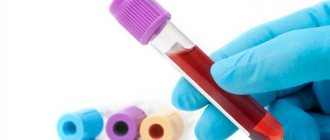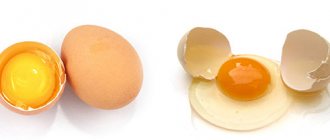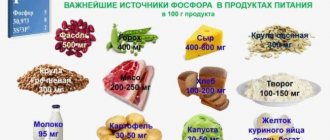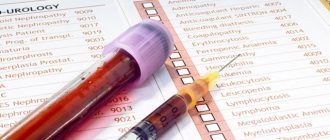Low pulse is one of the complaints of patients in cardiology departments. This phenomenon can cause many unpleasant moments, since it is accompanied by fainting states, weakness, cold sweat, dizziness, often being a sign of serious illness. Its systematic occurrence is a reason to seek professional medical help.
In order to find out the cause of a rare pulse, the doctor prescribes comprehensive diagnostic tests to identify existing problems. The pulse is represented by jerky oscillations of the arterial walls, by which the heart rate can be tracked and, having identified their violations, appropriate measures can be taken.
If you look at the accepted indicators of normal heart rate for different ages, you can conclude that it decreases as you get older. This is due to the growth of the muscular middle layer, known as the myocardium. The larger the volume of the heart, the fewer beats it needs to make in order to pump blood.
Causes of low heart rate
Despite the fact that the maximum frequency indicators can be called conditional and individual, depending on a number of factors (undoubtedly, within certain limits), the pulse is below 50 beats/min. - a sign of the presence of a disease. Its reduction to forty beats poses a threat to health and life, since the brain suffers from oxygen starvation. If it does not exceed forty beats within seven days, this is a sign of bradycardia, and with a progressive decrease, you should urgently seek professional medical help.
Almost all initiating factors of a pulse below normal are related to pathological conditions. For convenience, experts divide them into different categories, which can be found in our table.
| Category of reasons | How is it manifested? |
| Physiological | There are a number of natural factors and external influences that initiate a low pulse at normal pressure. Such conditions are not dangerous. This:
|
| Cardiological | The reasons for low blood pressure and low pulse may lie in the weakness of such a vital organ as the heart. They occur in the following diseases:
|
| Toxicological | Low blood pressure and low pulse can develop due to interaction with toxic substances when:
|
| Associated pathological conditions |
|
Low heart rate in the elderly is associated with age-related changes in the body. It often develops due to concomitant diseases or a natural slowdown in the body’s metabolic processes.
Normal heart rate for an adult: table by age
The normal heart rate of an adult by year (age) is given in the table:
| Age | Maximum and minimum limit | Average value |
| 15-50 years | 60-80 | 70 |
| 50-70 years | 66-87 | 76 |
| From 70 years old | 72-92 | 81 |
In an adult, the heart rate norms by age and the permissible heart rate limits in a child under 15 years of age differ significantly, which can be seen in the following table:
| Age | Maximum and minimum limit | Average value |
| Up to 3-4 weeks | 115-165 | 135 |
| From 1 to 12 months | 105-160 | 130 |
| 1-3 years | 90-150 | 122 |
| 3-5 years | 85-135 | 110 |
| 5-7 years | 80-120 | 100 |
| 7-9 years | 72-112 | 92 |
| 9-11 years | 65-105 | 85 |
| 11-15 years | 58-97 | 77 |
Knowing what the normal heart rate is for women and men by age, you can avoid many diseases. Measurements should be taken at rest. Under the influence of other factors (sports, pregnancy), slight deviations are possible.
Heart rate while walking
While walking, there is a slight increase in heart rate. How many heartbeats there will be per minute depends on the person’s fitness. For people leading a sedentary lifestyle, the heart rate can jump to 120, but for people who like to walk, it will remain within 90-100. To calculate the maximum permissible limit, subtract the person's age from 180.
When walking, the permissible heart rate is as follows:
- 15 years - 165;
- 35 years old - 145;
- 55 years old - 125;
- 75 years old - 105.
Heart rate at rest
The resting pulse is determined in the morning.
A person needs to sit on a chair and count his pulse. Changing body positions or taking measurements in the evening is not recommended, as the final result will be distorted. Generally accepted norms at rest:
- adults – 60-80;
- elderly – 70-90;
- teenagers - 70-80;
- children under 2 years old - 90-100;
- newborns - 130-140.
Heart rate while running
While jogging, a lot of stress is placed on the heart. People trying to lose weight should keep their heart rate close to the upper limit. If the goal is to strengthen the cardiovascular system, then you need to stop at a figure not exceeding 60-70%. To calculate the norm, you need to subtract your age from 200:
| Age | Maximum allowable heart rate | Pulse for weight loss | Pulse to strengthen the heart and increase endurance |
| 30 | 170 | 155-160 | 110-120 |
| 50 | 150 | 135-140 | 90-110 |
| 70 | 130 | 115-120 | 70-90 |
If, against the background of an increase in the pulse (within acceptable limits), the pressure readings remain normal, then the development of pathologies will not follow. Elderly people need to be especially careful. Their body is unable to withstand heavy loads.
Permissible heart rate during pregnancy
A woman who is expecting a baby experiences increased heart rate around the 5th month. This phenomenon is associated with an increase in circulating blood volume during fetal development. Usually the increase is insignificant and gradually the indicators return to the acceptable limit:
- Heart rate norms in children: table of heart rate correspondences from newborn age to adulthood
- at 14-26 weeks there is an increase of 10-15 contractions from the norm;
- the maximum increase occurs between 27 and 32 weeks;
- gradual normalization occurs closer to the birth of the child.
Clinical manifestations of low heart rate
A moderate decrease in pressure most often does not lead to the development of clinical manifestations and is not accompanied by circulatory disorders. However, with a heart rate of no more than forty beats per minute, the following are observed:
- dizziness;
- weakness;
- semi-fainting and fainting;
- feeling of constant fatigue;
- labored breathing;
- pain symptoms in the chest area;
- blood pressure surges;
- inability to concentrate;
- forgetfulness;
- visual impairment.
Symptoms with a low pulse correspond to circulatory disorders that appear against its background. So, if it is slowed down, the brain suffers from a lack of oxygen and hypoxia develops (that is, oxygen starvation). As a result, the patient is susceptible to convulsions and loss of consciousness, lasting from several seconds to one minute. Such conditions are life-threatening and can cause respiratory arrest and therefore require immediate medical attention.
How to measure
Heart rate is measured at rest in a quiet and warm room. To carry out the procedure, you will need a stopwatch and an assistant. Approximately an hour before the measurement, you need to eliminate physical and emotional stress and smoking. It is not recommended to take medications or drink alcoholic beverages.
To measure your heart rate, you need to place your palm on your chest
The person whose heart rate will be measured can lie down or sit down. After he takes the desired position, you need to lie down or sit quietly for five minutes.
The assistant places a clean, dry palm on the chest below the left nipple for a man and under the mammary gland for a woman.
It is necessary to determine the impact on the chest at the apex of the heart, which is called the apical impulse. It is heard in half of healthy people in the fifth intercostal space if the person is standing. If you can’t determine it, it means it falls on an edge.
After this, you need to take a stopwatch and start counting the person’s heartbeats for a minute. If the rhythm is incorrect, you need to do this for three minutes, then divide the resulting number by three.
Heart rate can be measured in other places, where the arteries come close to the surface. The pulsation is clearly palpable:
- on the neck,
- under the collarbone,
- at the temple,
- on shoulders,
- on the hip.
When measuring your pulse, to get more accurate results, you need to do it on both sides of the body.
Athletes need to monitor their heart rate during training
Diagnosis of low heart rate
Determining the causes of a pathologically low pulse requires a comprehensive diagnosis. First of all, the doctor listens to the patient’s complaints, collects anamnesis and conducts an examination. If bradycardia (i.e., decreased heart rate) is detected, the patient is prescribed a consultation with a cardiologist. As for diagnostic studies, they are as follows:
- Electrocardiography;
- Daily Holter monitoring;
- Ultrasound scan of the heart;
- EchoCG;
- Bicycle ergometry.
In addition, if necessary, TEE can be performed, which allows one to study the conduction pathways of the heart and determine the organic or functional nature of the disease.
Causes of tachycardia and bradycardia
If your heart rate at rest is not normal, this may be a sign of illness. Usually, other manifestations of the disease are also present.
If tachycardia is accompanied by symptoms such as dizziness, shortness of breath, weakness, fainting, then the following cannot be ruled out:
- infectious disease;
- heart disease;
- onset of stroke;
- endocrine disorders;
- diseases of the nervous system;
- tumor processes;
- anemia.
Bradycardia can normally be observed in the following cases:
- for athletes (40 strokes);
- in people engaged in heavy physical labor;
- when taking certain medications.
It can also be a sign of illness:
- poisoning;
- heart attack;
- stomach ulcers;
- hypothyroidism;
- myocardial inflammation.
Treatment for low heart rate
A moderate decrease in heart rate that occurs without symptoms does not require therapy. However, if it exists, the underlying pathology must be treated. The strategy depends on the underlying disease, but in any case is aimed at:
- Elimination of symptoms of low heart rate;
- Eliminating the risk of heart rhythm disturbances;
- Prevention of thrombosis development.
If the problem arose as a result of uncontrolled use of pharmacological drugs, their dose is adjusted - or, if they are not needed, completely canceled.
How to quickly increase your heart rate?
If a rare pulse is not a symptom of heart disease and appears for physiological reasons, you can speed it up and eliminate unpleasant symptoms by using simple remedies available in almost every home. Before starting activities, it is important to take into account the circumstances under which the heart rate decreased.
| Initiating factor | How and with what is it manifested? |
| Stress, shock, nervous disorders | If the heart rate decreases to forty beats per minute or below, you can take sedatives:
|
| Decreased blood pressure and pulse | The best option is to take decoctions for:
|
| Increased blood pressure and decreased heart rate | The best solution would be:
|
| Pregnancy |
|
If a person is sufficiently resilient and healthy, physical activity (from running, jumping and squats to cardio exercises) would be a good option.
Why do you need to measure your pulse?
Measuring your pulse is a fairly accurate way to assess the condition of your blood vessels and heart. Both excessive deceleration and strong acceleration of the heart rate lead to insufficient blood ejection into the aorta and the appearance of oxygen deficiency. This condition is manifested by shortness of breath, weakness, sweating, dizziness, and a feeling of chilly limbs.
Therefore, before visiting a doctor, it is recommended to regularly measure your pulse for several days and record it, indicating the time and degree of activity:
- in a dream;
- at rest;
- while walking;
- when climbing stairs and so on.
This will help the specialist understand how pronounced the abnormalities in the functioning of the heart are, because some pathologies in the body can manifest themselves, for example, only during sleep, and others when climbing a flight of stairs.
By giving your body a load, you can determine your level of physical fitness and calculate your heart rate to increase endurance:
- when running and swimming;
- cycling;
- exercises in the gym and so on.
Women's heart rate is on average higher than men's. This is due to the peculiarities of the nervous and hormonal regulation of the heart.
The number of pulse waves can be easily determined at home using the following methods:
- put two fingers on the wrist, feel the pulsation, count the number of beats in 20 seconds and multiply by three;
- measure pressure using a semi-automatic or automatic tonometer, which will also determine the pulse value.
How to properly place your fingers on your wrist when measuring your pulse?
With age, heart rate values gradually decrease. An excessively rapid heartbeat in older people can be one of the signs of various diseases - from anemia to heart failure.
Prevention of rare pulse
Preventive measures boil down to timely treatment of organic heart lesions, elimination of the effects of toxic substances on the myocardium, competent selection of doses of pharmacological drugs and their administration under medical supervision. Don't forget to make regular preventive visits to your therapist and cardiologist.
Make an appointment with CELT specialists and find out the reasons for your rare pulse without delay.
Make an appointment through the application or by calling +7 +7 We work every day:
- Monday—Friday: 8.00—20.00
- Saturday: 8.00–18.00
- Sunday is a day off
The nearest metro and MCC stations to the clinic:
- Highway of Enthusiasts or Perovo
- Partisan
- Enthusiast Highway
Driving directions









